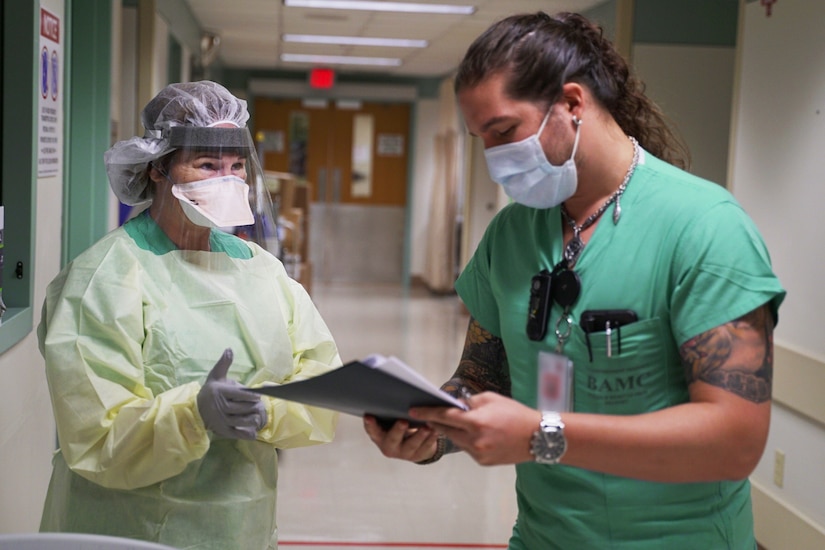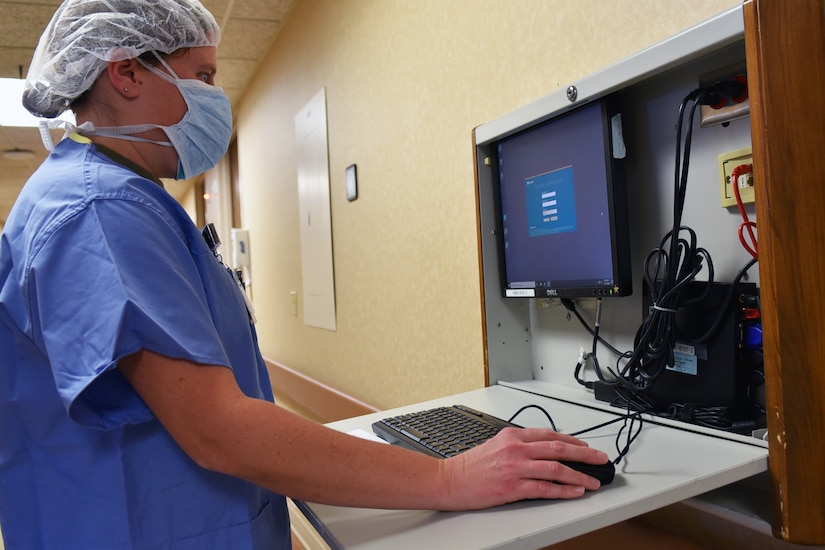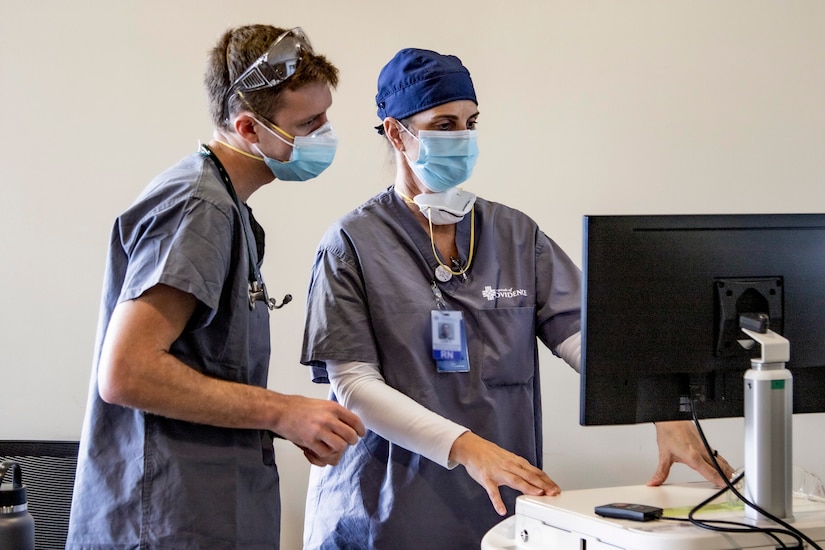With COVID-19 cases on the rise across the nation, Brooke Army Medical Center is bracing for the impact of the coming winter months as colder weather drives people indoors where the virus is more likely to spread.

Equipped with lessons learned, BAMC is preparing to shift resources and personnel to ensure hospital readiness in the event of a patient increase. On the preventive front, leaders continue to underscore the importance of safety measures such as hand washing, face coverings, personal protective equipment and physical distancing.
"The ability to remain flexible and agile, while ensuring the delivery of safe, high quality care, has been vital since the start of the pandemic," Army Brig. Gen. Shan K. Bagby, BAMC commanding general, noted. "Nearly a year ago, the San Antonio Military Health System moved out quickly to ensure the safety of our patients and staff, and we continue, as a system, to do everything possible to preserve their health and wellbeing."
Decision Points
Key leaders at BAMC continually assess current conditions, both within the San Antonio Military Health System, Joint Base San Antonio and across the community to ensure "we are all in step with each other and working effectively as a team," Air Force Col. Heather Yun, deputy commander for medical services, explained. Leaders across the organization also evaluate personnel and resources, to include personal protective equipment, on a daily, sometimes hourly, basis to ensure they are tracking trigger points for every contingency.
"These assessments help shape our posture and ensure we are ready to respond quickly and appropriately, whether it's scaling back elective surgeries to increase bed capacity or leaning more heavily on virtual care to protect patients and preserve PPE," Bagby said.
Health care personnel are a trickier resource to manage for a military hospital. Unlike their civilian counterparts, military personnel are called on to deploy in support of overseas operations, as well as humanitarian missions and stateside efforts. In recent days, numerous BAMC health care professionals have been assisting in the hard-hit areas of North Dakota as well as in El Paso, Texas, about eight hours west of San Antonio.

BAMC has also offered to accept non-COVID-19 beneficiaries from William Beaumont Army Medical Center in El Paso, freeing up their capacity to admit additional TRICARE patients with COVID-19 as needed.
"BAMC is proud to support our El Paso neighbors and colleagues," Bagby said. "We will continue to work alongside our Military Health System partner to help relieve the stress on their local health care system as needed."
In the event of a patient increase and to avoid shortages to critical care areas, BAMC is prepared to draw nurses and technicians from outpatient clinics as well as lean on its partner, the Institute of Surgical Research Burn Center, which is housed in the hospital.
These combined efforts have helped to ensure BAMC stands ready to support both military and community-based missions.
"The keys to our success so far have been in communication, deference to expertise, and collaboration, and we are relying on those in our current response as well to keep us agile and on the right track," Yun said. "We are in constant communication with our staff from all across the organization to ensure that concerns are addressed as early and effectively as possible, before they become safety issues. And we are relying on our subject matter experts who are keeping up with the science and advances in their field to provide counsel and refine our responses."
Community Support
As with all military hospitals, BAMC primarily provides care to active duty, military retirees and family members. However, as the only Level I trauma center in the Defense Department, BAMC has a unique community role within the local trauma network. Alongside its Level I partner, University Health System, BAMC administers lifesaving care to more than 4,500 trauma patients each year, including 750 burn patients, from an area that stretches across 22 counties in Southwest Texas and encompasses 2.2 million people.

Of the over 4,500 trauma patients admitted each year, about 85% are community members without military affiliation. The Secretary of the Army Designee, or SECDES, program enables BAMC to receive civilian trauma patients in a military treatment facility. Traumas range from gunshot wounds and stabbings to vehicle accidents and severe burns, many of which bear striking similarities to combat wounds. As a trauma center, service members from a vast array of specialties are able to hone valuable medical skills while aiding the community they call home.
"Our close partnership with Southwest Texas Regional Advisory Council, University Health System and the other local health care systems allows BAMC to seamlessly integrate into community crisis responses, Air Force Col. Patrick Osborn, deputy commander for surgical services, said.
Working alongside STRAC, which coordinates the region's trauma and disaster relief response, and UHS, BAMC is fully integrated within the local trauma network, Osborn said.
Critical Care
This has been evident in recent months. This past summer, BAMC took on additional trauma patients to ease capacity at local hospitals. Additionally, BAMC continues to care for the area's most critically ill COVID-19 patients, to include beneficiaries, veterans and civilian patients, through the use of extracorporeal membrane oxygenation, or ECMO, treatment, Osborn noted.
ECMO is a heart-lung bypass system that circulates blood through an external artificial lung, oxygenates it, and delivers it back into the bloodstream. Rather than treat the condition, ECMO performs the job of the patient's heart and lungs, buying the patient precious time to respond to treatments and heal. Requiring a highly specialized team and equipment, BAMC is one of a few hospitals within the city with this capability, and as with trauma, accepts civilian patients through the SECDES program.
"As much as able, BAMC is easing the burden on local health care resources by admitting civilian ECMO patients and seeking out military beneficiaries that can be transferred from community hospitals," Osborn said.
The mutual support of BAMC's military and community partners is key to mission success, the commander noted.
"Due to their support and the expertise of this team, the San Antonio Military Health is able to continue to ensure safe, quality care for our 250,000 active duty and military beneficiaries while preserving its readiness role as a worldwide response platform and sustaining the Level I trauma support of our region," Bagby said.
No comments:
Post a Comment